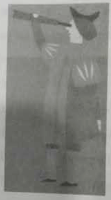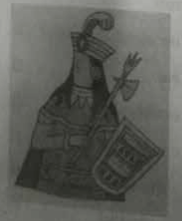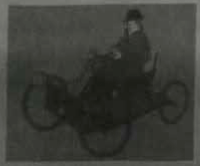备战2018年高考阅读理解每日一练(3)
教材版本:英语
试卷分类:英语高考
试卷大小:1.0 MB
文件类型:.doc 或 .pdf 或 .zip
发布时间:2024-05-01
授权方式:免费下载
下载地址:点此下载
以下为试卷部分试题预览
| 1. 阅读理解 | |
|
请阅读下列短文,从短文后各题所给的A、B、C、D四个选项中,选出最佳选项,并在答题卡上将该项涂黑。 CHRONOLOGICA ——The Unbelievable Years that Defined History
DID YOU KNOW…
CHRONOLOGICA is a fascinating journey through time,from the foundation of Rome to the creation of the internet. Along the way are tales of kings and queens,hot air balloons…and monkeys in space. Travel through 100 of the most unbelievable years in world history and learn why being a Roman Emperor wasn't always as good as it sounds,how the Hundred Years' War didn't actually last for 100 years and why Spencer Perceval holds a rather unfortunate record.
CHRONOLOGICA is an informative and entertaining tour into history, beautifully illustrated and full of unbelievable facts. While CHRONOLOGICA tells the stories of famous people in history such as Thomas Edison and Alexander the Great, this book also gives an account of the lives of lesser-known individuals including the exploeer Mungo Park and sculptor Gutzon Borglum.
This complete but brief historical collection is certain to entertain readers young and old,and guaranteed to present even the biggest history lover with somgthing new!
|
|
| 2. 阅读理解 | |
|
阅读理解
Before birth, babies can tell the difference between loud sounds and voices. They can even distinguish their mother's voice from that of a female stranger. But when it comes to embryonic learning(胎教), birds could rule the roost. As recently reported in The Auk: Ornithological Advances, some mother birds may teach their young to sing even before they hatch(孵化)。New-born chicks can then imitate their mom's call within a few days of entering the world. This educational method was first observed in 2012 by Sonia Kleindorfer, a biologist at Flinders University in South Australia, and her colleagues. Female Australian superb fairy wrens were found to repeat one sound over and over again while hatching their eggs, When the eggs were hatched, the baby birds made the similar chirp to their mothers—a sound that served as their regular “feed me!”call. To find out if the special quality was more widespread in birds, the researchers sought the red-backed fairy wren, another species of Australian songbird. First they collected sound data from 67 nests in four sites in Queensland before and after hatching, Then they identified begging calls by analyzing the order and number of notes. A computer analysis blindly compared calls produced by mothers and chicks, ranking them by similarity. It turns out that baby red-backed fairy wrens also emerge chirping like their moms. And the more frequently mothers had called to their eggs, the more similar were the babies' begging calls. In addition, the team set up a separate experiment that suggested that the baby birds that most closely imitated their mom's voice were rewarded with the most food. This observation hints that effective embryonic learning could signal neurological(神经系统的) strengths of children to parents. An evolutionary inference can then be drawn.“As a parent, do you invest in quality children, or do you invest in children that are in need? ”Kleindorfer asks. “Our results suggest that they might be going for quality. ”
|
|
- 河南省长垣市第十高中2020-2021学年高一下学期3月返校考试英语试卷
- 四川省凉山州2021届高中毕业班英语第一次诊断性检测试卷(含听力音频)
- 备考2022年高考英语二轮复习:完形填空(夹叙夹议)
- 四川省成都市成实外2021-2022学年高一下学期4月第一次阶段性考试英语试题
- 安徽省2021年英语高考模拟卷(5)
- 广东省珠海市第二重点中学2021-2022学年高二上学期期中考试英语试题
- 浙江省绍兴市鲁迅高级中学2020-2021学年高一下学期期中考试英语试题
- 黑龙江省大庆重点中学2021-2022学年高二下学期2月英语开学考试
- 福建省福州市八县(市)协作校2020-2021学年高一下学期英语期中考试试卷(含听力音频)
- 天津市河东区2021届高三下学期英语第二次模拟测试试卷
- 辽宁省营口市2021届高三上学期期末考试英语试题
- 江苏吴江汾湖高级中学2020-2021学年高二假期自主学习竞赛英语试卷(含完整音频)







